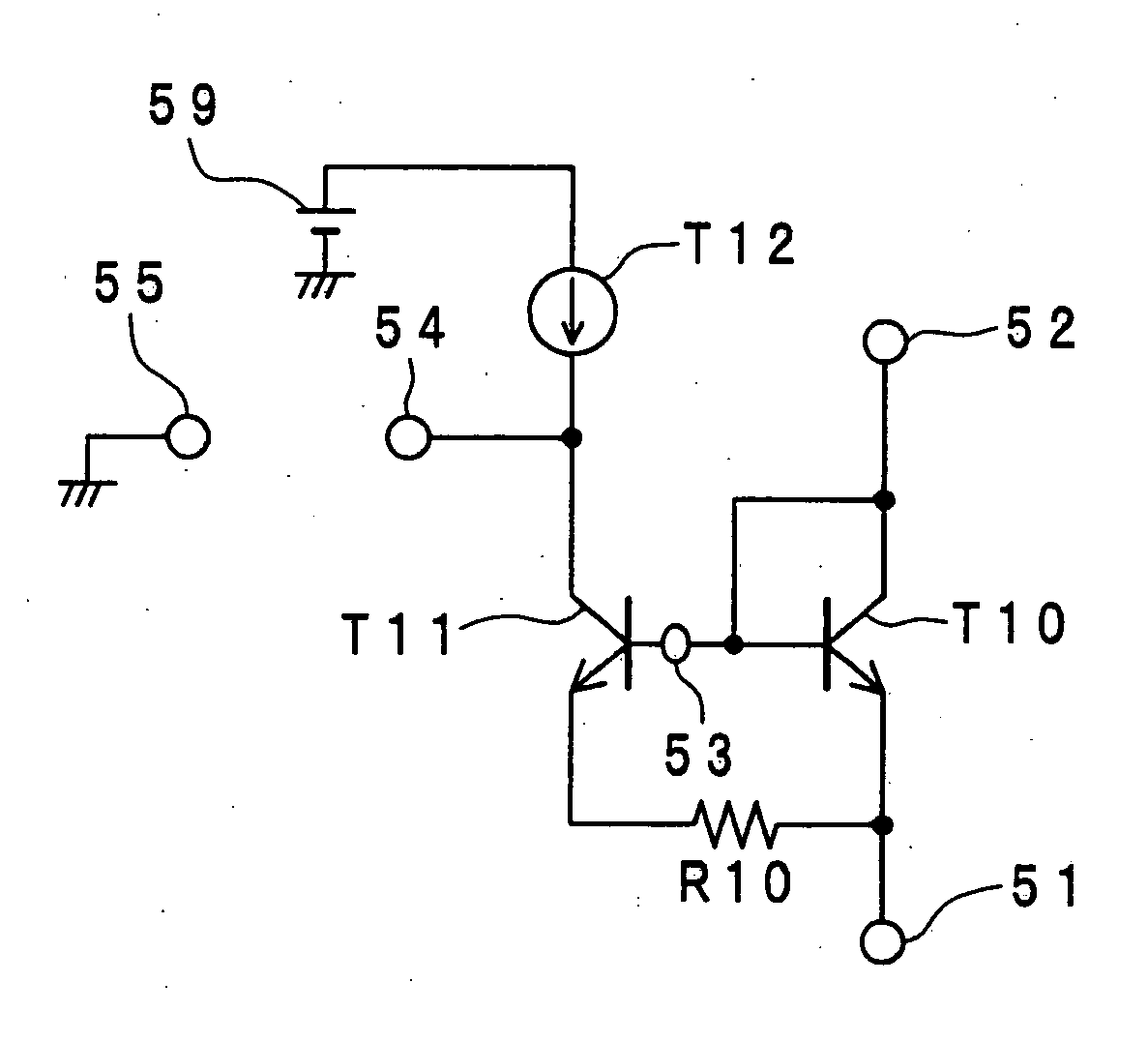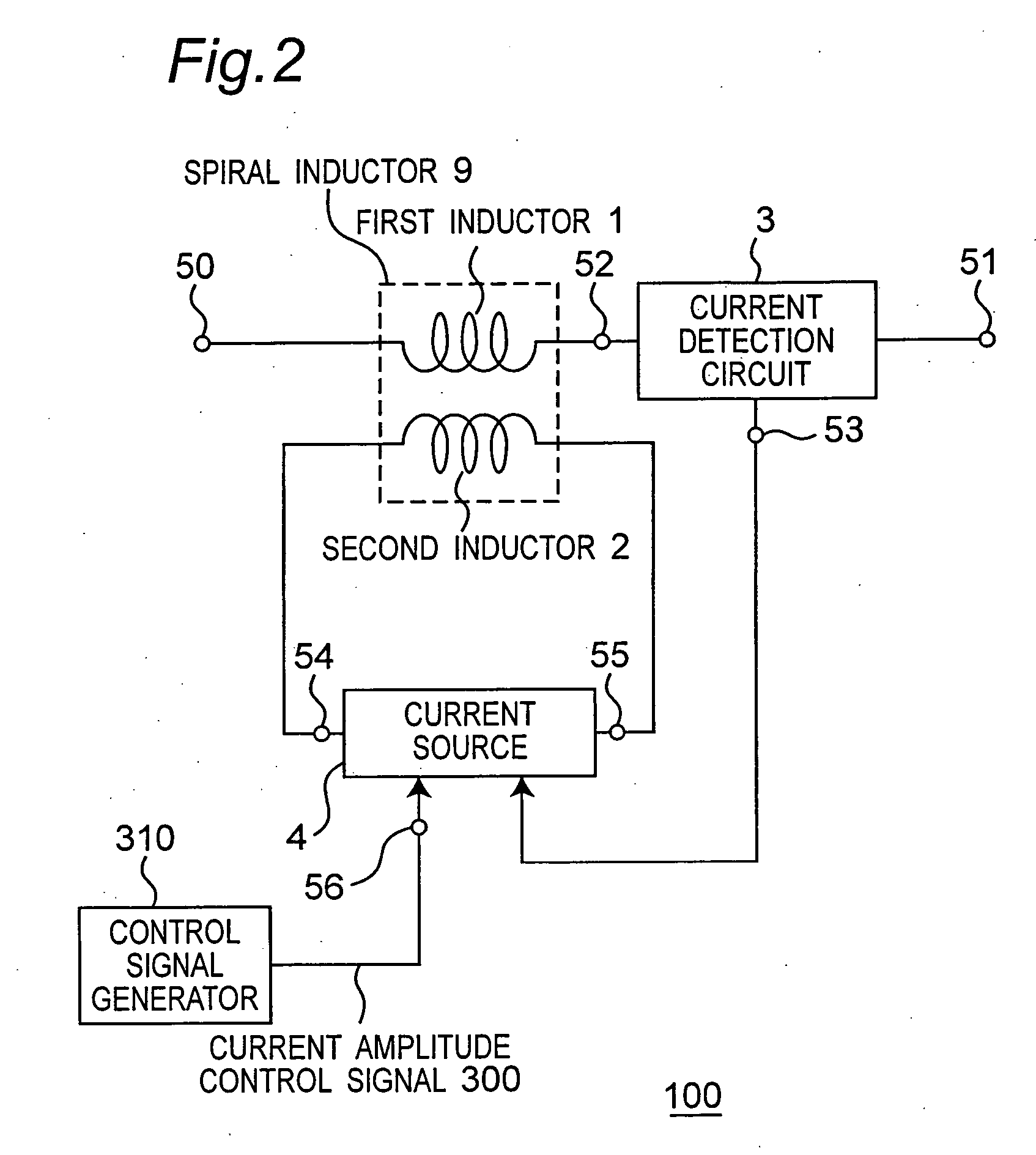Inductor unit and oscillator using the inductor unit
a technology of inductors and inductors, which is applied in the direction of oscillator, electrical apparatus, etc., can solve the problems of increasing the bandwidth of voltage-controlled oscillator, not affording sufficient fine tuning of oscillation frequency, and inductors built into the ic device, etc., to achieve stable oscillation characteristics, increase inductance, and increase q
- Summary
- Abstract
- Description
- Claims
- Application Information
AI Technical Summary
Benefits of technology
Problems solved by technology
Method used
Image
Examples
first embodiment
[0069]FIG. 1 is a block diagram of an inductor unit according to a first embodiment of the invention.
[0070] One end of the first inductor 1 is connected to a current detection circuit 3 through node 52, and the other end of the first inductor 1 is connected to node 50. The current detection circuit 3 is connected to node 51 and node 53 in addition to node 52. The current source 4 is connected to the current detection circuit 3 through node 53, and is connected through node 54 and node 55 to one side and the other side, respectively, of the second inductor 2. The circuitry between node 50 and node 51 is inductor unit 100.
[0071] The current flowing to the first inductor 1 also flows between node 51 and node 52 through the current detection circuit 3, and the frequency, phase, and current amplitude of the current are detected by the current detection circuit 3. The current source 4 generates a current signal of the same frequency, same phase, and current amplitude of a predetermined ...
second embodiment
[0117] The second embodiment of the invention described below is a voltage-controlled oscillator.
[0118]FIG. 9 is a block diagram of a voltage-controlled oscillator 110 according to this second embodiment of the invention.
[0119] As shown in FIG. 9, the voltage-controlled oscillator 110 comprises a differential oscillation unit 80 having transistors 7A and 7B, a variable capacitor unit 81 that uses varactor diodes 6A and 6B as variable capacitance elements, and a variable inductor unit 82 having spiral inductors 9A and 9B. The differential oscillation unit 80 oscillates using the inductance-capacitance parallel resonance circuit comprising variable inductor unit 82 and variable capacitor unit 81 as the load.
[0120] In the differential oscillation unit 80 the transistors 7A and 7B are connected with the base of one connected to the collector of the other, and the output signals Pout1 and Pout2 of the voltage-controlled oscillator 110 output from these two nodes. The emitters of trans...
PUM
 Login to View More
Login to View More Abstract
Description
Claims
Application Information
 Login to View More
Login to View More - R&D
- Intellectual Property
- Life Sciences
- Materials
- Tech Scout
- Unparalleled Data Quality
- Higher Quality Content
- 60% Fewer Hallucinations
Browse by: Latest US Patents, China's latest patents, Technical Efficacy Thesaurus, Application Domain, Technology Topic, Popular Technical Reports.
© 2025 PatSnap. All rights reserved.Legal|Privacy policy|Modern Slavery Act Transparency Statement|Sitemap|About US| Contact US: help@patsnap.com



